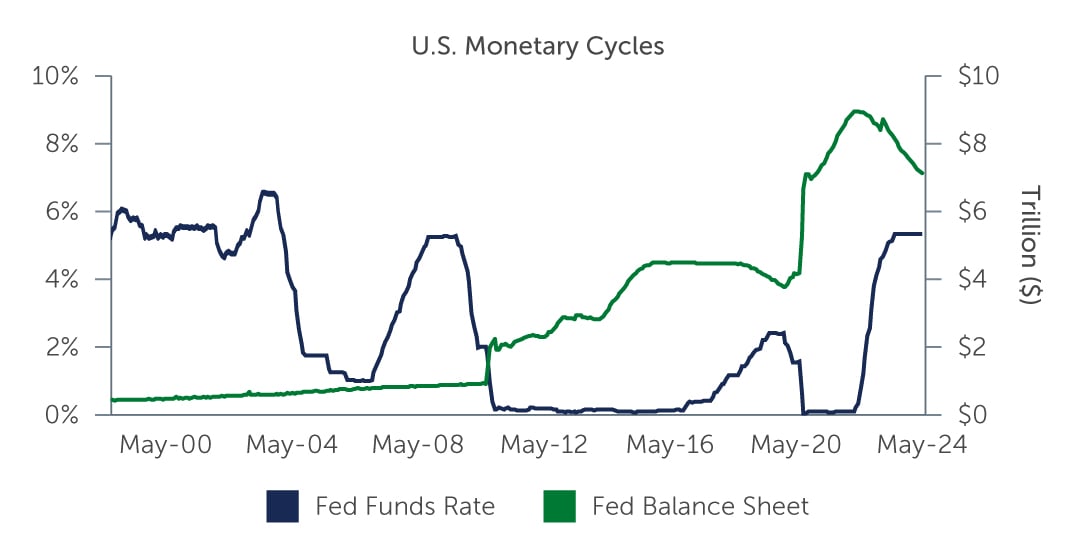EM Debt: Time to Load Up?
A number of factors have converged to create a potentially compelling opportunity in EM debt. And with prices at attractive levels relative to history, now may be a good time to consider an allocation to the asset class.
A Supportive Backdrop
Global financial markets have not had a traditional monetary easing cycle since before 2008. The last two rate-cutting cycles from the U.S. Federal Reserve (Fed) and other major central banks have been associated with cataclysmic events—the Great Financial Crisis (GFC) in 2008 and the Covid pandemic in 2020. During these periods, interest rate cuts were combined with large expansions of the Fed’s balance sheet (Figure 1). Today, the picture is somewhat different. Unless a new and unexpected crisis develops, the monetary easing cycle that recently began will likely focus solely on interest rate cutting, with the Fed continuing to shrink its balance sheet.
Figure 1: Previous Easing Cycles Combined Rate Cuts With Balance Sheet Expansion
 Source: Haver Analytics; Bloomberg. As of August 30, 2024.
Source: Haver Analytics; Bloomberg. As of August 30, 2024.
At the same time, after a prolonged period, global commercial banks have started to lend once again. This means, after well over a decade of bank retrenchment, the global financial system appears to be operating more in line with how it has functioned historically.





